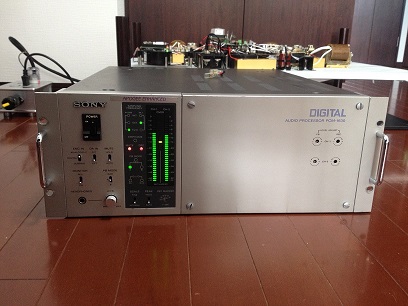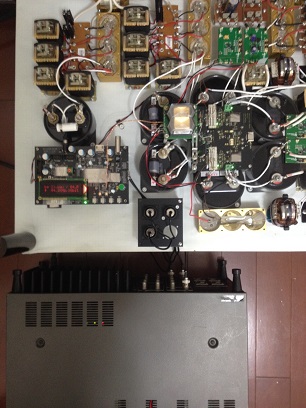I bought SONY PCM-1630 digital audio processor at a vintage audio pro shop in Tokyo. Its price was just around 500 USD equivalent.
The reason why I was interested in the device was that a DAC function in it might provide a kind of permanent benchmark for sound quality of basic PCM 44.1kHz/16 bit.
Though SONY DMR-4000 was also available at the shop, I did not buy it. Instead, As a transport, SDTrans384, a modern DIY SD memory card player that has direct SDIF2 output signals is connected to PCM-1630. An external ultra low phase noise OCXO, DuCULoN, of frequency, 45.1584 MHz, manufactured by NDK, Nihon Denpa Kyogyo, is attached to SDTrans384 as a master clock source. I believe such a low noise and a low phase noise transport was not available at those days.


Audio tracks I tried were just basic PCM 44.1kHz/16bit WAV files. Despite of non-high resolution sources, I got so impressed by the resurrected sound of PCM-1630 DAC. I feel it has both a superior high-resolution and strength & speed in all ranges. I really recognized the importance of knowing level of sound quality achievement once established in a professional music industry.
By the way, I'd like to request any suggestions for possible DIY type modification for PCM-1630 to get better sound quality. For example, replacement of some capacitors or something like that. I believe some senior engineers still possess the machine as a kind of heritage and maintain them.
The reason why I was interested in the device was that a DAC function in it might provide a kind of permanent benchmark for sound quality of basic PCM 44.1kHz/16 bit.
Though SONY DMR-4000 was also available at the shop, I did not buy it. Instead, As a transport, SDTrans384, a modern DIY SD memory card player that has direct SDIF2 output signals is connected to PCM-1630. An external ultra low phase noise OCXO, DuCULoN, of frequency, 45.1584 MHz, manufactured by NDK, Nihon Denpa Kyogyo, is attached to SDTrans384 as a master clock source. I believe such a low noise and a low phase noise transport was not available at those days.


Audio tracks I tried were just basic PCM 44.1kHz/16bit WAV files. Despite of non-high resolution sources, I got so impressed by the resurrected sound of PCM-1630 DAC. I feel it has both a superior high-resolution and strength & speed in all ranges. I really recognized the importance of knowing level of sound quality achievement once established in a professional music industry.
By the way, I'd like to request any suggestions for possible DIY type modification for PCM-1630 to get better sound quality. For example, replacement of some capacitors or something like that. I believe some senior engineers still possess the machine as a kind of heritage and maintain them.


